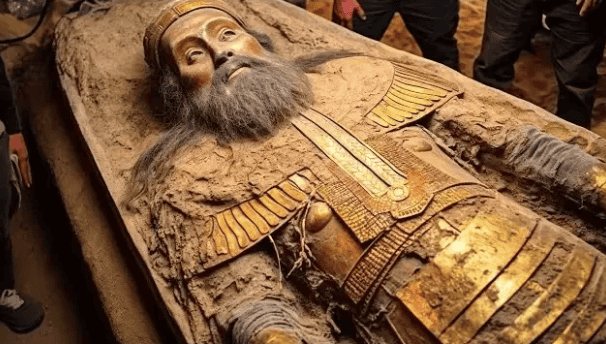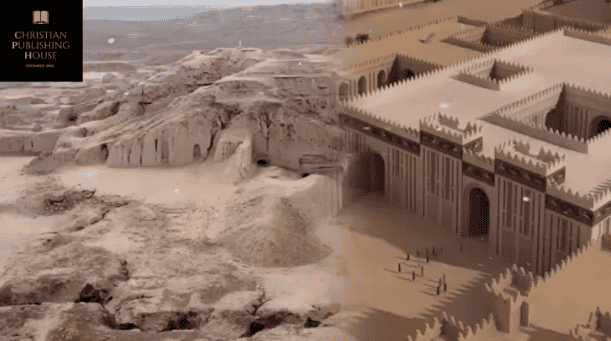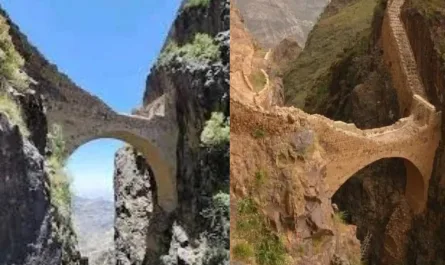In the sun-scorched deserts of modern-day Iraq, where the Euphrates River once cradled the cradle of civilization, a sensational claim has stirred the imaginations of historians and conspiracy theorists alike: the discovery of the tomb of Gilgamesh, the legendary king of Uruk immortalized in the world’s oldest epic poem. Reported in 2003 by German archaeologists, this find—allegedly a vast burial chamber beneath the riverbed—has sparked debates about its authenticity and fueled wild speculation about ancient giants, divine ancestry, and even U.S. military cover-ups. Is this the final resting place of a historical hero, or a modern myth echoing the allure of ancient mysteries like Peru’s Toro Muerto petroglyphs?
The Epic of Gilgamesh and Its Hero
The Epic of Gilgamesh, etched on clay tablets around 2100 BC, is one of humanity’s earliest literary masterpieces, predating the Bible and recounting the adventures of Gilgamesh, king of Uruk (near modern Basra, Iraq).
Described as a demigod of superhuman strength, born of a mortal father and the goddess Ninsun, Gilgamesh embodies the human struggle with mortality, friendship, and legacy. The epic mentions his burial under the Euphrates, where the river reportedly parted after his death, encasing his tomb in a sacred site. This poetic detail, coupled with the epic’s historical significance, has long tantalized archaeologists seeking evidence of a real Gilgamesh.
Uruk, founded around 5000 BC, was a cornerstone of Mesopotamian civilization, renowned for its monumental walls—attributed to Gilgamesh in legend—and possibly the birthplace of writing. The Sumerian King List names Gilgamesh as a ruler around 2600 BC, lending credence to his historical existence, though his depiction as a “giant” or demigod likely reflects mythological embellishment.
The 2003 Discovery Claim
In April 2003, German archaeologist Jorg Fassbinder, from the Bavarian Department of Historical Monuments, announced a potential breakthrough: using ground-penetrating radar (GPR), his team identified an ancient city beneath the Euphrates near Uruk, complete with canals, gardens, and a large burial chamber matching the epic’s description of Gilgamesh’s tomb.
The structure, detected in what was once a canal of the river, revealed mudbrick walls and a sophisticated layout, astonishingly consistent with the epic’s portrayal of Uruk’s urban design. Fassbinder cautiously noted, “I don’t want to say definitely it was the grave of King Gilgamesh, but it looks very similar to that described in the epic.”

The timing of this announcement, just weeks before the U.S. invasion of Iraq in March 2003, sparked conspiracy theories. Posts on X and various websites claim U.S. forces seized the site, possibly to access “ancient technology” or “Nephilim DNA,” referencing biblical giants. Some even allege that figures like Hillary Clinton sought “resurrection technology” from the tomb, though these claims stem from fringe sources and lack credible evidence.
Archaeological Reality vs. Speculation
Despite the excitement, no excavation confirmed the tomb’s existence, and no further updates have emerged since 2003. The initial discovery relied on non-invasive geophysical surveys, not physical digs, due to the site’s submersion and the instability caused by Iraq’s ongoing conflict. Severe droughts in recent years have exposed other Mesopotamian artifacts, such as a 4,000-year-old riverboat near Uruk, but no definitive tomb has been unearthed.
Mainstream archaeologists remain skeptical. The Epic of Gilgamesh blends history with myth, and while Uruk’s ruins—excavated since the 19th century—confirm its grandeur, the tomb’s identification remains speculative.
The epic’s flood narrative, strikingly similar to Noah’s Ark, suggests cultural exchange across ancient Near Eastern societies, but claims of Gilgamesh as a “giant” or “Nephilim” are unsupported by physical evidence. The notion of a U.S. military cover-up, popularized on platforms like X, lacks documentation and mirrors discredited hoaxes, such as the “alien mummies” of Nazca.
The Euphrates River, a lifeline of Mesopotamian civilization, has indeed revealed treasures, from cuneiform tablets to city ruins, as water levels dropped due to drought. The 2015 discovery of a clay tablet adding 20 lines to the epic’s Cedar Forest episode underscores the region’s ongoing archaeological significance. Yet, these finds are meticulously studied, not hidden, as seen with the repatriation of the looted Gilgamesh Dream Tablet to Iraq in 2021.
Cultural Resonance and Modern Myths
The allure of Gilgamesh’s tomb lies in its fusion of history and legend, much like the Jindo Sea Parting’s blend of nature and folklore. The epic portrays Gilgamesh as a towering figure, both literally and metaphorically, whose quest for immortality resonates across cultures. The idea of a “giant” king buried under a parted river captivates imaginations, echoing Nikola Tesla’s esoteric patterns or the alien-like figures in Toro Muerto’s petroglyphs. Yet, as with those mysteries, extraordinary claims require extraordinary evidence.

Conspiracy theories about U.S. intervention reflect modern anxieties about power and hidden knowledge, similar to speculations about ancient astronaut visitations. However, the real treasure of Gilgamesh lies in the epic itself—a 4,000-year-old meditation on human ambition and loss, preserved through clay tablets and scholarly dedication. Like the Roman roads that outlasted empires, Uruk’s legacy endures in its literature and ruins, not in unverified tombs or secret military vaults.
A Call for Clarity
The claim of Gilgamesh’s tomb under the Euphrates is a compelling story, but it remains unconfirmed, a tantalizing possibility rather than a proven fact. As with Hannah Glass’s tragic lesson or the skepticism surrounding Peru’s “alien” petroglyphs, we must approach such claims with curiosity tempered by critical thinking. The Epic of Gilgamesh continues to inspire, not because of hidden tombs or giant skeletons, but because it captures the timeless human struggle for meaning.
Visit Iraq’s National Museum or explore Uruk’s archaeological sites to connect with this ancient legacy. The true marvel lies not in a lost tomb but in the enduring story of a king who sought immortality—and found it in words that echo across millennia.


